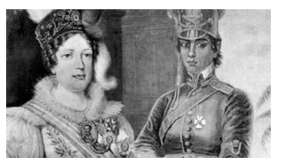Considering the ideas and linguistic aspects of the text ab...
Próximas questões
Com base no mesmo assunto
Ano: 2022
Banca:
CESPE / CEBRASPE
Órgão:
UNB
Prova:
CESPE / CEBRASPE - 2022 - UNB - Vestibular - Inglês |
Q2032729
Inglês
Texto associado


On May 13th, 1822, a group of 186 women sent Maria
Leopoldina the Letter from the Bahian Women to Her Royal
Highness Dona Leopoldina, congratulating her on her role in the
patriotic rulings of her husband, Prince Regent Dom Pedro. The
document acknowledged the contribution made by the then
princess and empress-to-be to ensuring her husband’s
permanence in Brazil, which they believed was a key factor in
gaining independence from Portugal. “Far more than just a letter,
it is a political manifesto,” notes historian Maria de Lourdes
Viana Lyra. “At that time, in Brazil, women were given a
subordinate role restricted to private household and family
affairs. Outside the domestic sphere, women were made invisible,
but that did not stop them from mobilizing politically to fight for
independence in a variety of ways,” she states.
In addition to isolated actions led by famous figures, there
were other many significant actions that are still largely unknown
to the general public, more specifically, those related to instances
of collective mobilization of women active in the public arena
during the fight for Brazilian independence. Historian Andréa
Slemian expands on the matter. “Throughout this process, many
women expressed themselves through letters, manifestos, and
other texts. Thus, the nascent press in Brazil played an important
role, not only by publishing these women’s ideas regarding
independence on editorial pages, for example, but also by serving
as a mouthpiece for views supporting women’s rights,” notes
Slemian.
Ana Paula Orlandi. Unafraid to fight.
Internet: :<www.revistapesquisa.fapesp.br> (adapted).
Considering the ideas and linguistic aspects of the text above, judge the follow item.
The statement that, in general, women were to be concerned solely with their homes and families is explained by the gender-based division of social tasks and roles in effect at that time in Brazil.
The statement that, in general, women were to be concerned solely with their homes and families is explained by the gender-based division of social tasks and roles in effect at that time in Brazil.